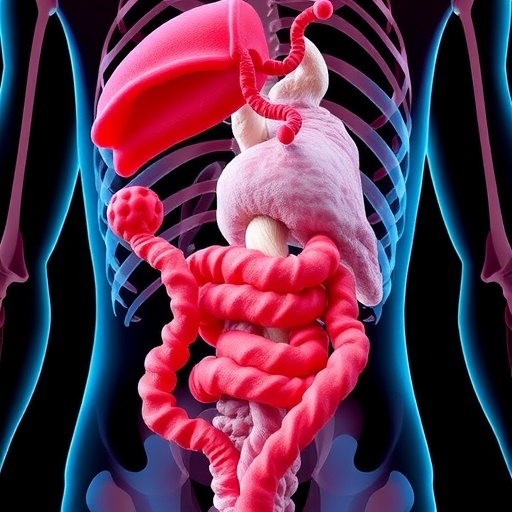
Research into the biological underpinnings of neurodegenerative diseases continues to evolve, with new insights into how sex differences can influence disease progression. A recent study led by researchers Sun, R., Zimbalski, LK., and Schreyer, S. sheds light on the energy demands during the preplaque stage in a transgenic mouse model of Alzheimerâs disease, offering revelations that might unlock new pathways for treatment and understanding of this pervasive condition. The study signals an important step towards appreciating the nuanced differences observed in male and female Alzheimerâs patients and highlights the significance of gender in biological research.
Alzheimer’s disease is characterized by progressive cognitive decline, and while much focus has been directed towards symptomatic treatment, understanding its early stages is equally crucial for developing preventive strategies. Notably, the preplaque stage signifies a critical period when the pathology begins to manifest but before the overt plaques associated with neurodegeneration become apparent. It is in this early stage that altered metabolism and energy demands may create an environment conducive to the onset of cognitive decline.
In the experiment, the researchers employed a transgenic mouse model, deliberately engineered to express amyloid plaques similar to those found in human Alzheimerâs patients. This model enabled a targeted investigation into the early metabolic shifts occurring in the brain before significant amyloid accumulation is present. By doing so, they provided insights into not only the mechanics of Alzheimerâs but also the differential impact on male and female subjects, which could lead to significant advancements in personalized medicine.
The methodology utilized in the study involved sophisticated imaging techniques that track energy metabolism in real-time. By employing advanced nuclear magnetic resonance spectroscopy, the team could observe variations in metabolic rates between genders during the preplaque stage. The findings revealed that male and female mice exhibited distinct energy utilization patterns, emphasizing the role sex hormones could play in modulating brain metabolism during a critical period leading to Alzheimerâs.
Interestingly, the differences noted suggest that neuroprotection could also vary significantly based on sex. For example, female mice showed a higher rate of glucose metabolism compared to their male counterparts. This could indicate a naturally elevated risk in females for developing Alzheimerâs disease, thus raising crucial questions about the implications of hormonal differences and their relationship to Alzheimerâs pathology. The consideration of these biological factors could open new avenues for research tailored explicitly to gender differences in neurodegeneration.
As the implications of such findings unfold, they underscore the importance of integrating gender-specific approaches in both research and treatment of Alzheimerâs disease. A framework that considers these differences could enhance the understanding of why women appear to be at a greater risk than men, as well as how symptoms and disease progression differ between the sexes. Such knowledge could ultimately lead to the design of more effective intervention strategies that address these variances.
Importantly, this study also emphasizes a paradigm shift in neurological research from a one-size-fits-all approach towards an appreciation of biological diversity among individuals, particularly concerning sex as a significant variable in disease manifestation. Addressing metabolic dysregulation during the preplaque stage may become a cornerstone of future therapeutic strategies, especially for at-risk populations that exhibit heightened vulnerability to Alzheimerâs pathology.
As scientists continue to investigate neurodegenerative diseases, the findings from this study present vital clues about the interplay of metabolism, sex differences, and potentially modifiable risk factors associated with Alzheimerâs disease. By understanding how energy demand varies during these pivotal early stages, researchers can better strategize interventions that take into account the multifaceted nature of neurodegenerative disorders.
There is no doubt that the revelations from this research have profound implications for how we approach Alzheimerâs disease on a global scale. With notable advancements in medical science, there is hope that investigating nuanced factors such as sex-specific metabolic changes will lead to groundbreaking therapies and interventions, tailored to the individual biology of both men and women. The findings certainly support the urgency of conducting further studies that would expand on this notion and explore other environmental and biological factors influencing Alzheimerâs risk across sexes.
Moreover, the role of lifestyle choices and their interaction with biological sex should not be overlooked. Emerging evidence indicates that interventions addressing diet, exercise, and lifestyle could yield differing benefits in male and female populations battling Alzheimer’s disease. As research progress continues, such insights could not only refine treatment protocols but also aid in preventative efforts aimed at younger at-risk individuals.
In summary, the work spearheaded by Sun et al. serves as a pivotal reminder of the complexity of Alzheimerâs disease and the necessity of integrating a multifaceted view of its underlying mechanisms. As we deepen our understanding of how gender influences neurodegeneration, we pave the way for innovative approaches that prioritize both personalized medicine and robust prevention strategies. The pathway forward is illuminated by a balanced consideration of both male and female biological modeling in scientific inquiry, ultimately aligning with a more holistic view of Alzheimerâs disease management on a global scale.
Subject of Research: Changes in energy demand during the preplaque stage in Alzheimer’s disease.
Article Title: Sex-specific changes in energy demand during the preplaque stage in a transgenic Alzheimerâs mouse model.
Article References:
Sun, R., Zimbalski, LK., Schreyer, S. et al. Sex-specific changes in energy demand during the preplaque stage in a transgenic Alzheimerâs mouse model. Biol Sex Differ 16, 54 (2025). https://doi.org/10.1186/s13293-025-00737-0
Image Credits: AI Generated
DOI:
Keywords: Alzheimer’s Disease, Energy Demand, Sex Differences, Neurodegeneration, Metabolism, Transgenic Mouse Model.
Tags: Alzheimer’s disease treatment pathwaysbiological research on gendercognitive decline in Alzheimer’searly stages of Alzheimer’s pathologyenergy demands in neurodegenerationgender differences in Alzheimer’s diseasemetabolism alterations in Alzheimer’spreplaque stage of Alzheimer’spreventive strategies for Alzheimerâs disease.sex differences in disease progressiontransgenic mouse model researchunderstanding neurodegenerative diseases




